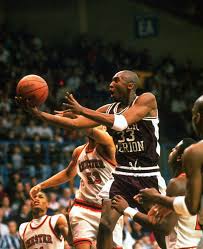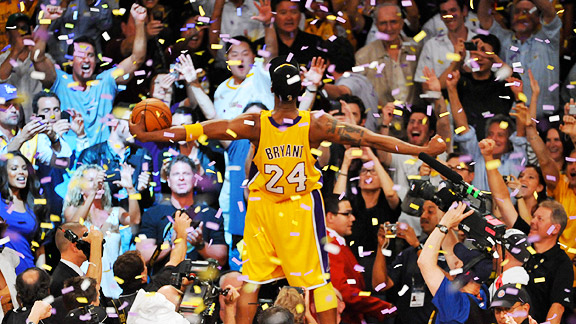In 1996, before the District 1 Class AAAA boys’ final between Lower Merion and Norristown High School, Kobe Bryant was already deemed the highest scorer in the history of southeastern Pennsylvania preps, passing Wilt Chamberlin who played for Overbrook.

The teenager’s pathway to early comps of Michael Jordan by the likes of Wilt The Stilt, was paved by a serial killer attitude towards obstacles that dared to stand in his way.
On the All The Smoke podcast, former NBA star Richard Hamilton revisited one of the many stories he had as Bryant’s AAU teammate and friend, showing a glimpse into the obsessive psychotic basketball assassin Kobe Bryant was becoming.

At the time of the Charlie Webber tournament in Maryland, Hamilton and Bryant played on the Patterson AAU team and the No.1 player in America was the 6-foot-9 multi-faceted wing, Tim Thomas.
The night before facing Thomas, Kobe Bryant paced the room like a mastermind plotting his next move.
He told Hamilton, “Yo Rip, tomorrow imma’ kill this dude,” Bryant said. “After tomorrow it ain’t gon’ be no doubt in anybody’s mind who the number one player in America is—watch.”
Hamilton said after that game everyone had Bryant as the No.1 player.
Hamilton said he scored close to 50 and they won the game. Bryant was the same guy who averaged 31 points, 12 rebounds, 7 assists, 5 blocked shots and 5 steals per game his senior year, playing all five positions at Lower Merion.
The same guy who in the summer after his junior season in high school, played at St. Joseph’s University against some 76ers’ players, including 3rd overall pick, Jerry Stackhouse who had just wrapped his rookie season in the NBA after two seasons with North Carolina.
17-year-old Kobe Bryant not only held his own, but he beat Stackhouse in one-on-one, prompting the legendary Dean Smith to recruit Bryant to Chapel Hill.

That little laker boy who grew into the man, would challenge the 100-point scoring mantle by dropping 81.

Took over in game 4 of his first NBA Finals in 2000 at 21-years old when Shaq fouled out of the game.
And dared to tell Michael Jordan, “I could kick your ass one-on-one.”
The same man who captured everyones attention on someone elses night, scoring 60 points in his final game as the Warriors went for a record-breaking 73 wins versus the Grizzles.
Amongst other things, he was foolish enough to believe he could become the goat.
Five rings, 18 All-Star appearances ( four All-star MVPs), 15 All-NBA Teams, MVP, 12 All-Defensive Teams, two scoring titles, fourth all-time scorer in the regular and postseason, and two Gold medals later, and ignorance is bliss.
Kobe Bryant was the most audacious player to ever play the game.
One of my favorite anime is Naruto Shippuden. And a character that I really enjoy is an anti-hero named Nagato—better know as Pain. Pain was the acting leader of a group called the Akatsuki, who captured these tailed beasts for this greater evil plot, but this is not about all of that.




